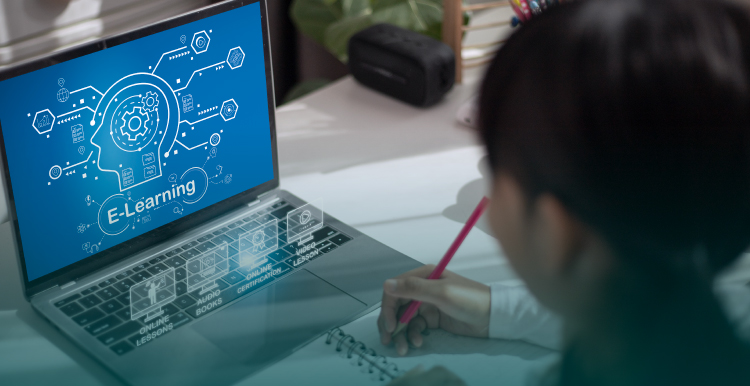The future of education is being increasingly defined by the integration of technology. As universities face the challenges of globalization, shifting demographics, evolving job markets, and the need for more flexible learning environments, technology is playing a pivotal role in reshaping the way universities deliver education, conduct research, and engage with students. From enhancing the learning experience to streamlining administrative tasks, technological advancements are creating more accessible, personalized, and efficient learning environments.
In this article, we will explore the key roles technology is playing in shaping the future of universities and how it is transforming the academic landscape for both students and educators.
1. Enhanced Learning Through Digital Tools and Platforms
Technology is revolutionizing the learning process by offering new, innovative tools that cater to a wide variety of learning styles. The adoption of digital tools allows students and faculty members to have access to vast amounts of information, interactive learning experiences, and more flexible ways to engage with course content.
E-Learning Platforms
E-learning platforms are central to the future of education. Tools like Moodle, Canvas, and Blackboard allow students to access course materials, participate in discussions, submit assignments, and take exams all in a digital environment. These platforms enable universities to offer hybrid and fully online courses, providing students with more flexible options to pursue their education at their own pace and from any location.
- Flexibility in Learning: Students no longer need to adhere to rigid schedules and traditional classroom settings. Online courses allow learners to balance education with personal commitments, such as jobs or family responsibilities.
- Access to Diverse Content: E-learning platforms give students access to a wider range of learning resources, such as video lectures, interactive quizzes, and virtual simulations, enriching their educational experience.
- Global Reach: Universities can now offer their programs to a global student body, breaking down geographical and financial barriers that previously limited access to higher education.
Adaptive Learning Technologies
Adaptive learning systems use algorithms and data analytics to personalize the learning experience based on individual student performance. These technologies track how well a student is doing with various topics and adjust the pace and difficulty of the material accordingly. For example, platforms like Knewton and DreamBox are being used in universities to provide personalized feedback and support for students.
- Customized Learning Paths: Adaptive learning systems allow students to progress through coursework at a pace that matches their learning ability, ensuring that no student is left behind while still challenging those who are excelling.
- Real-Time Feedback: These systems can provide immediate feedback to students, helping them identify areas where they need improvement and allowing for faster intervention if necessary.
2. Artificial Intelligence and Automation in Universities
Artificial intelligence (AI) is playing an increasingly important role in universities, transforming how teaching, learning, and administration are carried out. AI technologies can enhance the student experience by providing personalized learning support, improving decision-making processes, and automating time-consuming tasks for staff and faculty.
AI-Powered Tutoring and Support
AI-based tutoring systems can offer personalized assistance to students who may need extra help with coursework. Platforms like Socratic and Quizlet use AI to provide students with step-by-step solutions and explanations to academic problems, particularly in subjects such as math and science. These tools give students the ability to get help whenever they need it, regardless of the time of day.
- 24/7 Availability: AI-powered tutoring systems can provide students with instant help, making learning more accessible and reducing the reliance on human tutors.
- Scalable Support: AI systems can assist a large number of students at once, making them ideal for large lecture courses where individual attention from instructors may be limited.
Automating Administrative Tasks
Universities handle a significant amount of administrative work, including student enrollment, grading, scheduling, and managing communications. AI and automation technologies are helping universities streamline these processes. For example, chatbots powered by AI can respond to student inquiries about registration, deadlines, and course requirements, significantly reducing the administrative burden on staff.
- Time Efficiency: AI and automation can handle repetitive tasks more efficiently, freeing up staff to focus on higher-value activities such as academic advising and research.
- Cost Savings: Automating administrative tasks can help universities reduce costs and improve resource allocation.
AI for Data-Driven Decision Making
Universities collect vast amounts of data, ranging from student performance to financial expenditures. AI and data analytics tools can analyze this data to identify trends and patterns that can inform decision-making. For instance, AI can predict student retention rates or identify at-risk students based on their academic performance and engagement levels.
- Improved Student Support: By analyzing data, universities can provide more targeted interventions for students who may need extra support, such as tutoring or counseling.
- Resource Optimization: AI tools can help universities optimize their use of resources, ensuring that budgets are allocated efficiently and that courses and programs meet student demand.
3. Virtual and Augmented Reality in Education
Virtual reality (VR) and augmented reality (AR) are technologies that are rapidly gaining traction in the education sector, offering immersive learning experiences that were once unimaginable. These technologies allow students to engage with their coursework in interactive, experiential ways that go beyond traditional learning methods.
Virtual Classrooms and Campuses
In response to the COVID-19 pandemic, many universities transitioned to virtual learning environments using video conferencing platforms such as Zoom and Microsoft Teams. Moving forward, VR can further enhance these virtual classrooms by creating immersive, 3D environments where students can interact with instructors and peers as if they were physically present on campus.
- Global Accessibility: Virtual classrooms enable students from all over the world to attend courses without needing to travel to a specific location.
- Collaborative Learning: VR environments can promote collaboration by allowing students to work together in virtual spaces, engaging with each other in more dynamic ways than in traditional online formats.
Simulations for Practical Learning
VR and AR offer practical applications for students in fields such as medicine, engineering, architecture, and the arts. Through VR simulations, medical students can practice surgeries, engineers can interact with 3D models of structures, and art students can create and manipulate virtual designs.
- Hands-On Learning: These technologies allow students to gain practical experience in a controlled, risk-free environment, without the need for physical resources or real-world consequences.
- Cost-Effective Training: In fields like medicine, VR simulations offer a cost-effective way to train students without needing expensive equipment or real-world patients.
4. Blockchain Technology in Education
Blockchain, the technology behind cryptocurrencies like Bitcoin, is making its way into universities and higher education systems. In education, blockchain can be used for securing and verifying credentials, ensuring the integrity of academic records, and enabling the secure transfer of student data.
Verifiable Diplomas and Credentials
Blockchain can provide universities with a way to securely store and verify academic records, making it easier for employers and other institutions to authenticate a candidate’s qualifications. By using blockchain to issue digital diplomas and certificates, universities can reduce the risk of fraud and improve the efficiency of verification processes.
- Increased Security: Blockchain’s decentralized and immutable nature makes it an ideal tool for protecting sensitive student data and academic records.
- Global Recognition: Blockchain can help make academic credentials more universally recognized and easily transferable across borders, streamlining the global movement of students and professionals.
5. The Future of Faculty and Student Collaboration
Technology is transforming the way faculty members collaborate with each other and engage with students. The use of collaboration tools like Google Workspace, Slack, and Microsoft Teams allows faculty to work together more efficiently, whether they are sharing resources, co-authoring papers, or communicating with students in real-time.
Collaborative Research and Innovation
Universities are increasingly utilizing digital tools to support collaborative research efforts. Tools like Mendeley, Zotero, and EndNote allow researchers to share academic resources, manage citations, and collaborate on projects regardless of their physical location. These tools enable cross-institutional and international collaboration, which is essential in solving complex global challenges.
Enhancing Student-Faculty Interaction
Technology is also enhancing the student-faculty relationship by providing more opportunities for real-time interaction. Students can now schedule office hours online, access lecture recordings, participate in online discussions, and receive immediate feedback on assignments.
- Increased Access: Technology breaks down barriers between students and faculty, making it easier for students to seek help and for faculty to provide guidance and mentorship.
Conclusion
Technology is undeniably playing a transformative role in shaping the future of universities. From online learning platforms and AI-driven tutoring systems to VR simulations and blockchain technology, innovations are making education more accessible, personalized, and efficient. These advancements are not only enhancing the student experience but also improving university operations, research capabilities, and faculty-student collaboration.
As universities continue to embrace technology, it is crucial for them to maintain a balanced approach that leverages these tools while preserving the human aspects of education. The future of universities will be defined by a hybrid model that blends traditional teaching methods with cutting-edge technology, preparing students for success in an increasingly digital world.




